To most West Australians it is “Rotto” – their very own, magical, holiday island, “overseas”, at home…within eyesight of Perth.
To indigenous West Australians it is Wadjemup – a place of exile, imprisonment, premature death. The island’s 19th & early 20th century history is more monumentally unjust & tragic than Alcatraz’s.
Each year around half a million people visit Rottnest Island.
Most of them are Perth residents, making a very short trip on a fast ferry.
Not a few of them were conceived on Rotto and/or there enjoyed their first “adult” pleasures.
Until only a few years ago most of them gave not a thought to the island’s dark history; many did not even know about it.
Around 4,000 aboriginal people were incarcerated on Rottnest; around 400 never left the island.
As you can read here, some West Australians have a personal connection to Rotto/Wadjemup as both “holiday isle” and “isle of shame”.
For a deeper look at Rottnest’s shameful past, click this
Rottnest is best visited – and most affordable – in winter, when few people go there.
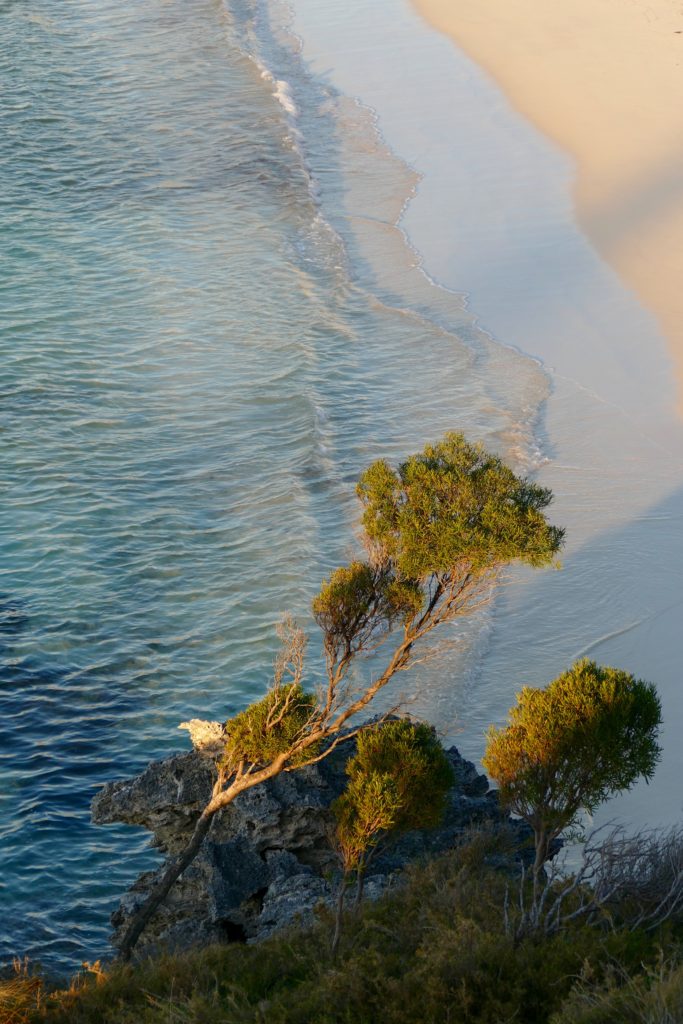
Geordie Bay – which I am overlooking, as I write – is the loveliest place to stay.
In summer you could almost literally walk across its waters without wetting your feet – so chock is the bay with boats.
As I write – looking over the many moorings and the little jetty – there is not one boat.
For the past six hours of this intermittently rainy day just two people have walked onto the jetty.
The pelican – resting there, these past three hours – did not move a centimetre.
In December-January this is a place of too many people and too much drug consumption (alcohol, mostly); I understand why “Macca” (ex-Beatle) reportedly declared it “the rottenest island” he had ever seen.
But Rotto in winter is quietly splendid.
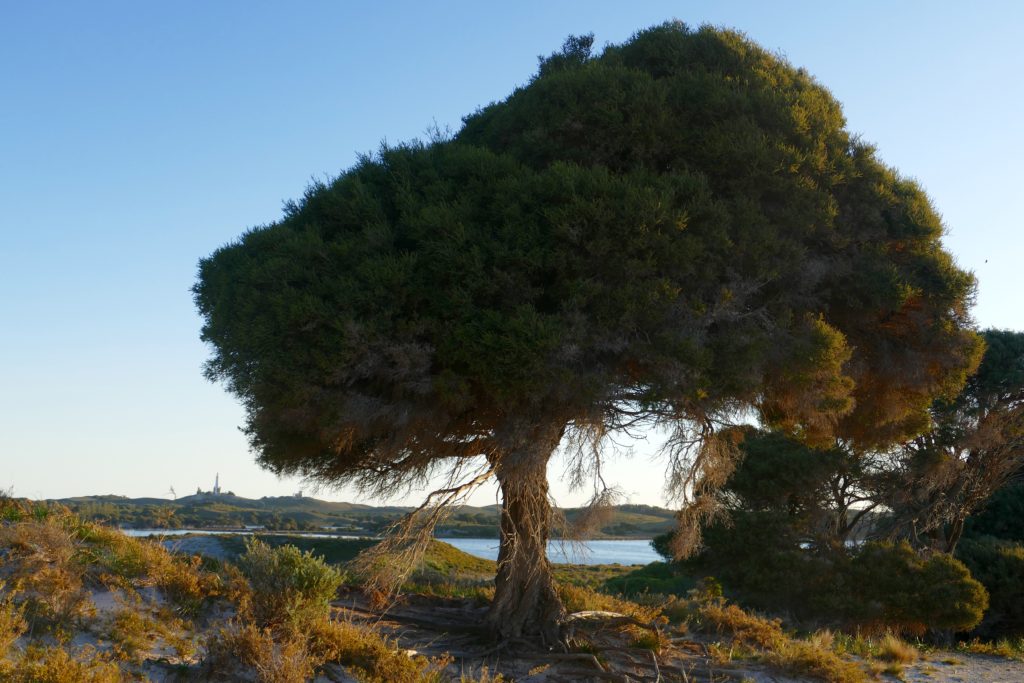
Melaleuca Lanceolata, pictured above, is known locally as Rottnest Tea Tree. ( it also grows naturally in many other Australian places and has various other names, as detailed here )
It is the most prominent among trees which were growing naturally before European eyes first saw the island, probably in the early 17th century.
The Dutch explorers described Rottnest as well-wooded.
When they arrived, Rottnest had no human inhabitants.
Had they arrived 7,000 or more years earlier, Rottnest would have been attached to the mainland and its Noongar inhabitants would have already lived, hunted, fished and conducted ceremonies on Wadjemup for many thousands of years.
European farming began in 1831 – a fundamentally unsuitable pursuit, given the extremely low fertility of Rottnest’s soil and the fragility of its natural environment.
The formerly “well-wooded” Rotto has long since been much-ravaged, greatly eroded.
However, the environmental news over recent decades is mostly good.
It is circa 20 years since I last visited, and Rotto is certainly better-wooded now than then.
Many thousands of appropriate trees and shrubs have been planted, some inappropriate ones removed, human foot traffic is now much better directed, and the island is very evidently in generally better condition than it was late last century.
All these measures are ongoing.
For example, if one now stands above Little Parakeet Bay and looks across the salt lakes to Wadjemup Lighthouse – the older and larger of the island’s lighthouses – the view is much more “well-wooded” than it was.
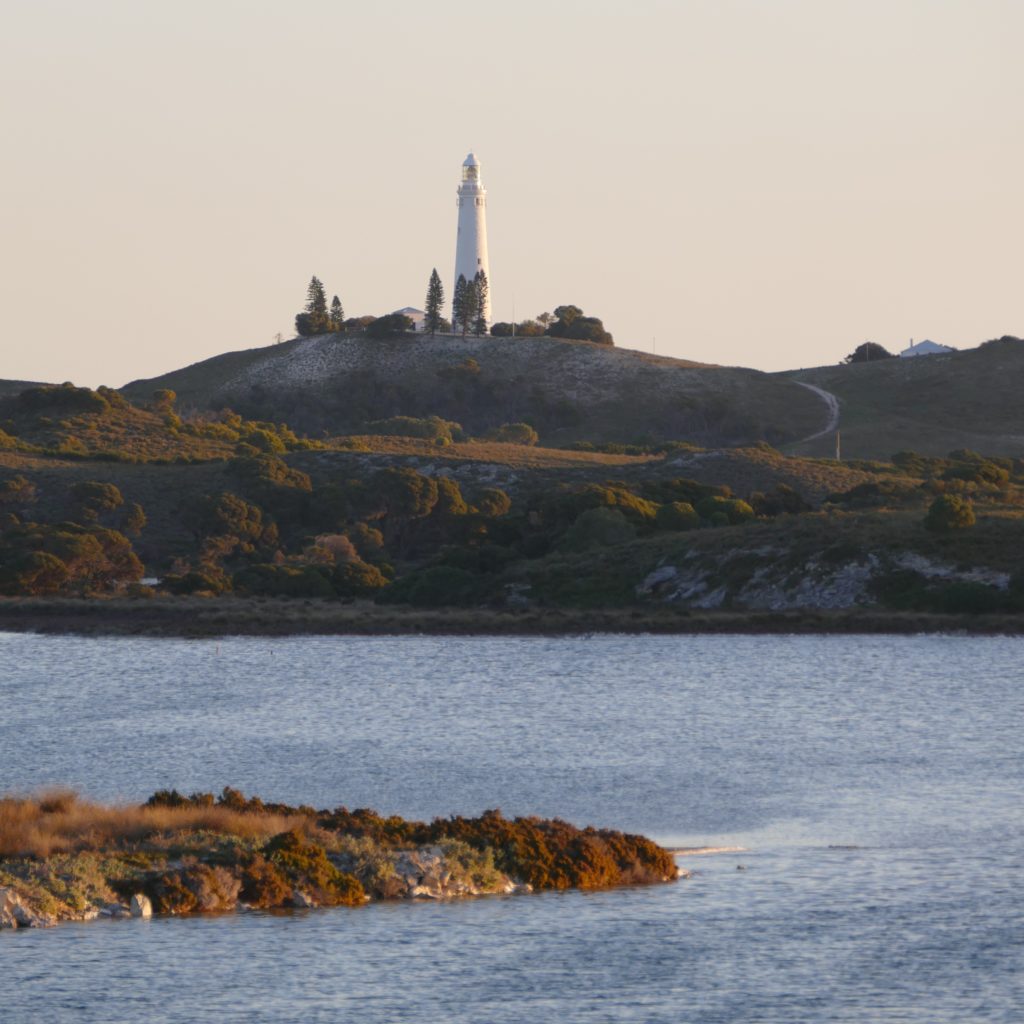
And if one is standing atop the dunes, doing so, they are better-vegetated, and human feet are no longer running riot.
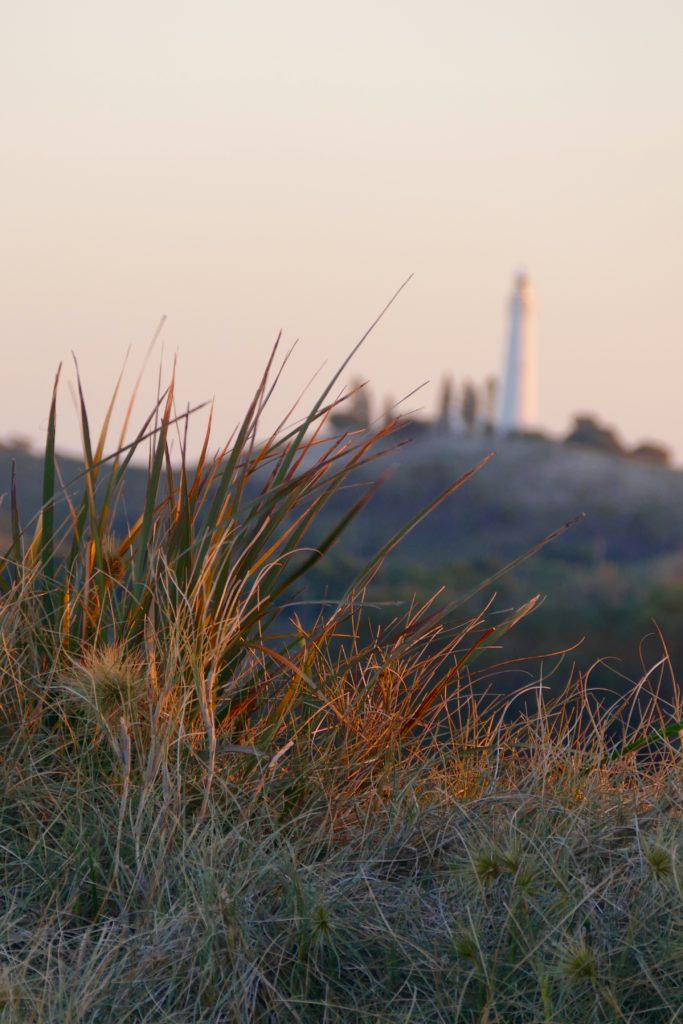
In a few days, chapter two of Rottnest Island in winter will show you the benign, natural foam which oft-fringes Rotto’s lakes.
We will also visit the island’s West End – a place much wilder than its settled East – and meet some local wildlife.
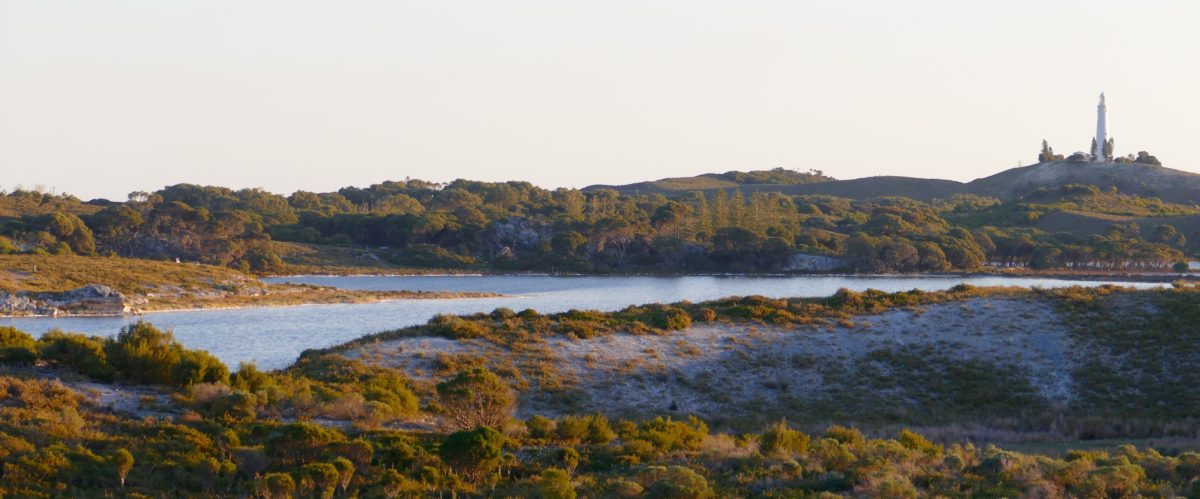
Beaut photos, Doug.
Agree that winter is the best time for staying on Rotto.
“Not a few of them …..” indeed, Rotto was the most preferred of meeting places in those times … Perth’s amazing exuberance in the early 70’s … world music in Subiaco … nude bathing in Swanbourne Beach – beach volleyball au naturel, the new Perth city mall. Arch McKirdy’s ‘Music till Midnight’ still held sway over the ABC spot later to be re-invented by the fine influence of Robin and your good self…the Daily Planet
Did you ever discover the hidden underground buildings on Rotto, climbing down the old air vents into the American bunkers, a small city completely obscured by overlaying blankets of thick steel cable mesh and dense island ventilation..some great photographic opportunities from those hidden gunnels?
Hi Joe,
I reached Perth in 1983…it was still (indeed, still is) a deal more exuberant than Adelaide! My beloved and I have been into bunkers on Perth-facing side of Rotto, but I think those are not the American “small city” of which you write
Hi Dave,
My experiences in WA were mainly all in the 70’s, a wonderful time with unforgettable memories. I’m a little prone to creative exaggeration to inspire more adventurers, so perhaps not a city…those were the same bunkers.
In those early days Swanbourne beach was a real sight to behold. There was so many patrons (full families) that it supported a number of enterprising traders. Lads selling freshly cooked snags on the barby and girls selling ice creams, all prepared and marketed starkers, and of course the daily beach Volleyball…a unique Perth experience.
Cheers